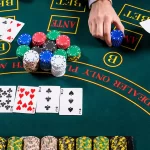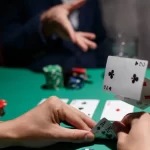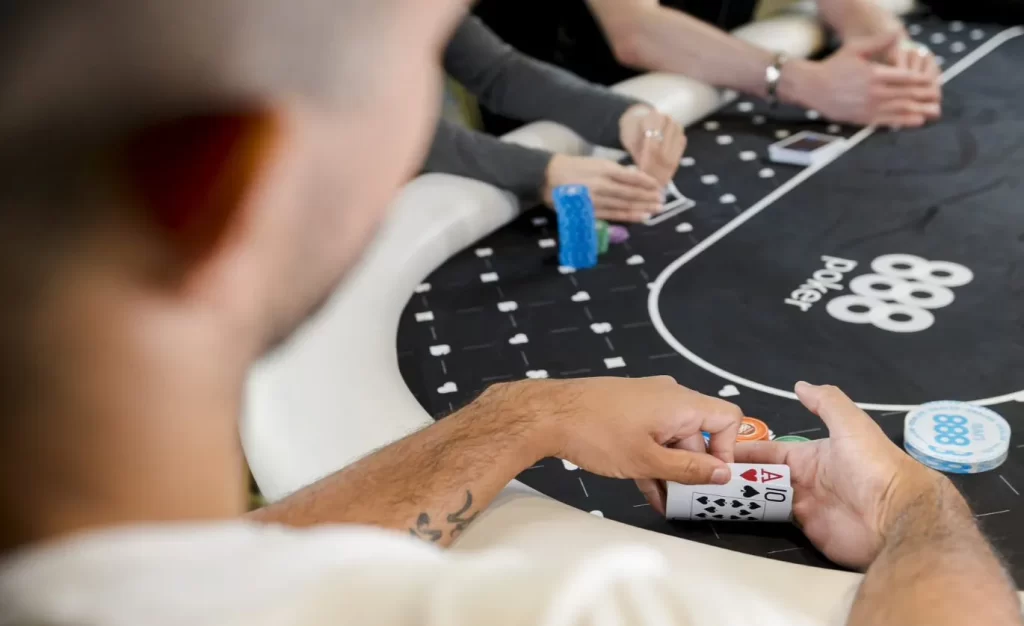Reading poker tells – unconscious and subconscious behavioural cues your opponents make during a hand – can become a useful tool for your repertoire. Playing against a cricket player can sometimes help spot these kinds of unconscious tics. Sometimes a cricketer might subconsciously tense up their shoulders when expecting a ball, or involuntarily move their leg up and down as they grab another drink.
Tells could be shifts in betting patterns; they might also be physical expressions; to appreciate each you first need to determine a baseline behaviour and then look for the interplay between the context and situation.
Eyes
Eyes are called the ‘windows to the soul’ for a good reason. They can give away their owner’s confidence or information about their hand. Hence, other tells may include facial expressions, body language, and even how they hold their chips or cards (such as a shaking hand or a nervous posture).
Whether it’s figuring out a guy’s tells from watching him play more poker or training yourself to concentrate on the metronomic rhythms that underpin your own play, timing is everything. A player who takes too slow to evaluate a flop before making decent range estimations might be hanging onto a big hand, but staying out of the pot until others are ready to ante up.
This isn’t foolproof – gestures might be used differently depending on context and players’ individual styles – but knowing these tells will broaden your edge over other players. It should also enliven the game.
Mouth
Courtesy photographer Timothy GreenJust as important are mouth tells. A player’s tics and twitches, how they grip their cards, even their enunciation can give away important clues regarding their possible hand strength.
When you play a lot, it becomes second nature to pick up on the tells that people make. Experienced players can just tell when someone doesn’t have a good hand. Eventually, you can read your opponents like a book. That being said, not all tells are good ones. Many times players can read you when you have a bad hand. You have a really strong hand, but because you are worried about fake tells, you end up giving off one of your good tells.
In order to scout for and make sense of nonverbal tells, players need to first populate their repertoire of baseline behaviour and familiarise themselves with standard activities, so that anomalous patterns jump out – for example, fidgeting and sweating as signs of strong hands; hesitations when speaking or changes in betting patterns as signs of bluffs; the way he shakes his hand, the pattern of his breathing, the way in which he holds his cards – these among so many possible physical tells.
Voice
Poker master Doyle Brunson is legendary for his ability to read tells, so this guide provides you with all the important information you need to identify physical and behavioural tells in order to determine the strength of your opponent’s hand.
Physical gestures as simple as the breathing rhythm or someone’s chip-and-card-reaching pattern can serve as meaningful signals, as can a character’s sudden movement (is that excitement or anticipation?); or a sudden change of patience, apparent in a leg-crossing or uncrossing.
If you want to figure out what the tells are, and then decode them, you have to have a picture of when among your peers in the capital cities these tells exist. You have to understand the context in which they operate. And then you have to have the intelligence to have an idea about the odds attached to that tell, and whether or not it holds. You’re playing positionally against your opponent, much like a chess player, and trying to cut down your potential losses.
Body Language
Being able to read your opponents’ tells is essential to becoming a competent poker player. Ankle fidgeting, a nervous tic, a change in the way they make their bets, all of these involuntary and unconscious reactions can give you valuable insight into their hand strength and overall confidence. But it is very difficult to accurately pick up on tells and interpret them, and building these reading skills is a slow process.
Navarro covers the basics of body language as well as specific tells such as ‘Freeze, Flight or Fright’ reactions, and how to interpret tells through context and other observation.
Keep an eye on how players are reaching out to grab their chips and other cards – if someone is going to be exposed on the river, they’ll often have a quick jerk as though they are excited or anticipating the card – but most impatience signs come from the body, so keep an eye on those instead. These are just a few cues that you can pick up on. Deciphering the cues in others can help to keep you one step ahead at the table.












More Stories
The Calling Station Poker Strategy
How to Avoid Playing Too Many Hands in Poker
A Beginner’s Guide to Casino Poker Cash Game Play